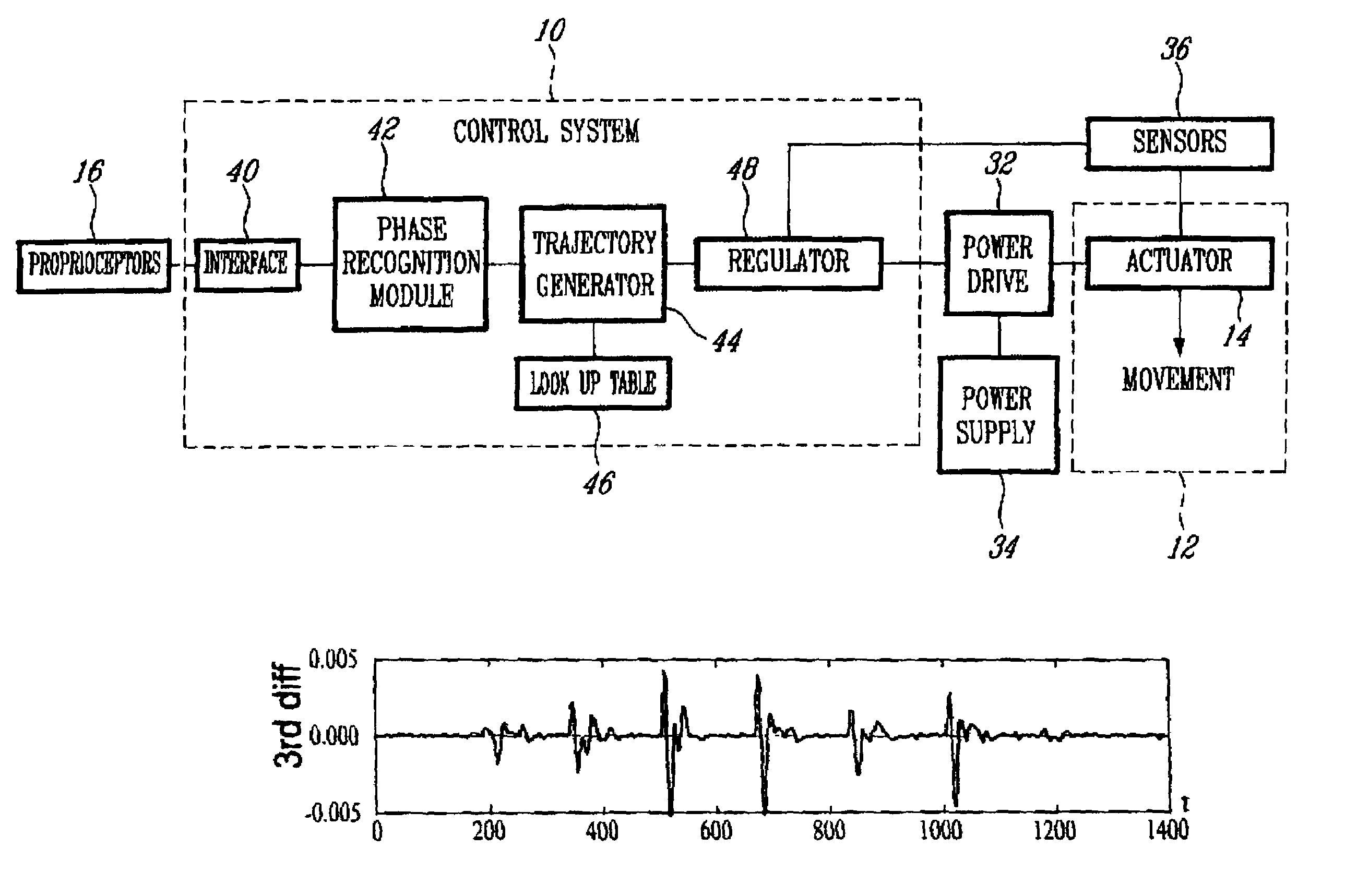Control system and method for controlling an actuated prosthesis
a control system and prosthesis technology, applied in the field of control system and a control method for controlling an actuated prosthesis, can solve the problems of difficult inability to achieve automatic control of complex mechanical systems, and the notorious control problems of conventional powered artificial limbs or myoelectric prostheses
- Summary
- Abstract
- Description
- Claims
- Application Information
AI Technical Summary
Benefits of technology
Problems solved by technology
Method used
Image
Examples
Embodiment Construction
[0143]The appended figures show a control system (10) in accordance with the preferred embodiment of the present invention. It should be understood that the present invention is not limited to the illustrated implementation since various changes and modifications may be effected herein without departing from the scope of the appended claims.
[0144]FIG. 1 shows the control system (10) being combined with an autonomous actuated prosthesis for amputees. It is particularly well adapted for use with an actuated leg prosthesis for above-knee amputees, such as the prostheses (12) shown in FIGS. 2 and 3. Unlike conventional prostheses, these autonomous actuated prostheses (12) are designed to supply the mechanical energy necessary to move them by themselves. The purpose of the control system (10) is to provide the required signals allowing to control an actuator (14). To do so, the control system (10) is interfaced with the amputee using artificial proprioceptors (16) to ensure proper coordi...
PUM
 Login to View More
Login to View More Abstract
Description
Claims
Application Information
 Login to View More
Login to View More - R&D
- Intellectual Property
- Life Sciences
- Materials
- Tech Scout
- Unparalleled Data Quality
- Higher Quality Content
- 60% Fewer Hallucinations
Browse by: Latest US Patents, China's latest patents, Technical Efficacy Thesaurus, Application Domain, Technology Topic, Popular Technical Reports.
© 2025 PatSnap. All rights reserved.Legal|Privacy policy|Modern Slavery Act Transparency Statement|Sitemap|About US| Contact US: help@patsnap.com



